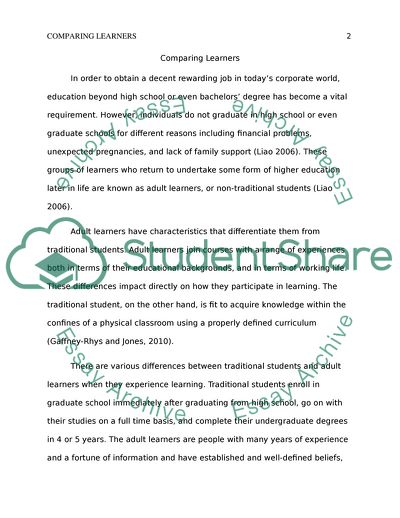Cite this document
(Specifics of Adult Learners Literature review Example | Topics and Well Written Essays - 2000 words, n.d.)
Specifics of Adult Learners Literature review Example | Topics and Well Written Essays - 2000 words. https://studentshare.org/education/1832070-comparing-learners
Specifics of Adult Learners Literature review Example | Topics and Well Written Essays - 2000 words. https://studentshare.org/education/1832070-comparing-learners
(Specifics of Adult Learners Literature Review Example | Topics and Well Written Essays - 2000 Words)
Specifics of Adult Learners Literature Review Example | Topics and Well Written Essays - 2000 Words. https://studentshare.org/education/1832070-comparing-learners.
Specifics of Adult Learners Literature Review Example | Topics and Well Written Essays - 2000 Words. https://studentshare.org/education/1832070-comparing-learners.
“Specifics of Adult Learners Literature Review Example | Topics and Well Written Essays - 2000 Words”. https://studentshare.org/education/1832070-comparing-learners.


